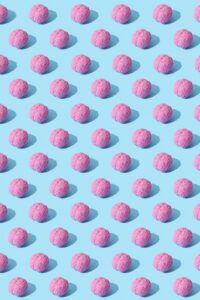The color of the year has been chosen! Pantone Color Institute has determined the color trend for 2024 and announced this year’s main color as “Peach Fuzz”. This color will bring a breath of fresh air to any space, creating a vibrant and modern atmosphere like a fresh peach fuzz.
Color is a communication tool that speaks its own unique language beyond verbal expressions. Considering that each color carries its own language and meaning, we can say that colors have a flexible and variable energy. In the language of colors, it is possible to trace a meaning that changes from one individual to another, from one day’s atmosphere to another. Colors have the power to express a mood, emotional state or atmosphere, so the meaning of colors can change depending on how the energy they carry is perceived and interpreted. The moving and dynamic nature of colors points to the fact that each one can have different meanings in the context of time, space and the individual.
So what is the impact of colors on our psychology and perception?
In general terms, some colors have common meanings and reflections for humanity. For example, the color red is striking and exciting. It is associated with passion, dynamism and energy. Using the color red intensely can trigger respect and aggressive emotions. The color red is also used in products that appeal to youth.
Again, the color green is associated with feelings of peace, freshness and comfort. It is frequently used in areas such as health and natural product packaging. Black matches with the words power and charisma. It has been found that people have less stomach pain in green environments. Green is also the most preferred color for gum packages and places where vegetables are sold. Colors have been found to deactivate some nerve cells in the eye for a short time. The color green is one of them. Excessive use can also trigger negative emotions in people. Orange is defined by the themes of sincerity, warmth and innovation. It is frequently used by many brands in both advertisements and product lines, especially when entering the summer months.
Consumer buying behavior can change according to the color chosen. It also plays an important role in defining a brand. The color used gives unconscious messages, for example, if the product to be marketed is a food, messages are given to the consumer at the point of naturalness and health suitability.
The color of the year “Peach Fuzz” seems to be used continuously by many brands throughout the year. From product packaging to interior design, from graphic design to fashion, the color of 2024 plays an important role in determining the aesthetic trends of the coming year.
Reference:
Psychologist Merve Altındağ
Alici, N., & PAKTAŞ, M. G. (2020). İç mekânda renk algısı ve psikolojiye etkileri. Modular Journal, 3(1), 89-105.
DEMİRDÖĞMEZ, Ö. G. D. M. (2021). GİRİŞİMLERİN (İŞLETMELERİN) KULLANDIKLARI RENKLER VE PAZARLAMADA RENK PSİKOLOJİSİ.
ÖZDEMİR, A. G. T. (2005). Tasarimda Renk Seçimini Etkileyen Kriterler. Çukurova Üniversitesi Sosyal Bilimler Enstitüsü Dergisi, 14(2), 391-401.




